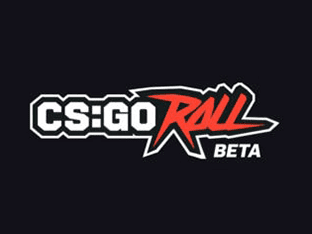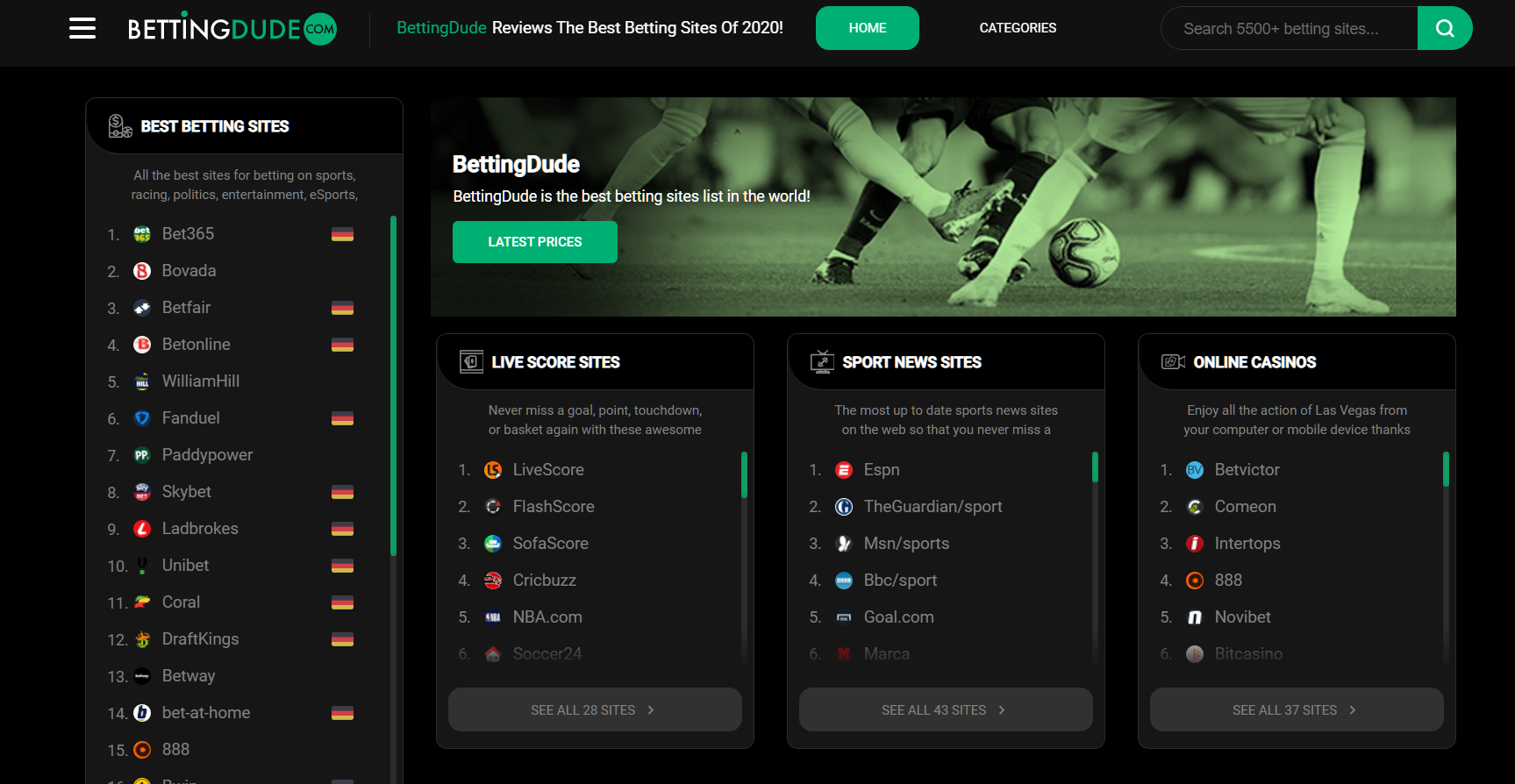GGDrop
Pros and Cons
-
Active promos and seasonal events that add value if you time them well
-
Large case variety and extra modes (good for pacing your balance)
-
Quick onboarding via Steam, smooth UI, and snappy openings
-
Solid “flow.”
-
Potential KYC and regional limits depending on where you live
Available Languages
Payment Methods
Company Information
- Website:https://bettingdude.me/ggdrop
- Date Established:2018
- Email:[email protected]
- Number of Players:1,130,112
Raitings
- Reputation 9.8
- Live 9.9
- Website 9.6
- Bet offer 9.7
- Mobile 9.4
- Diversity 9.9
- Odds 9.5
- Bonus 9.7
Summary
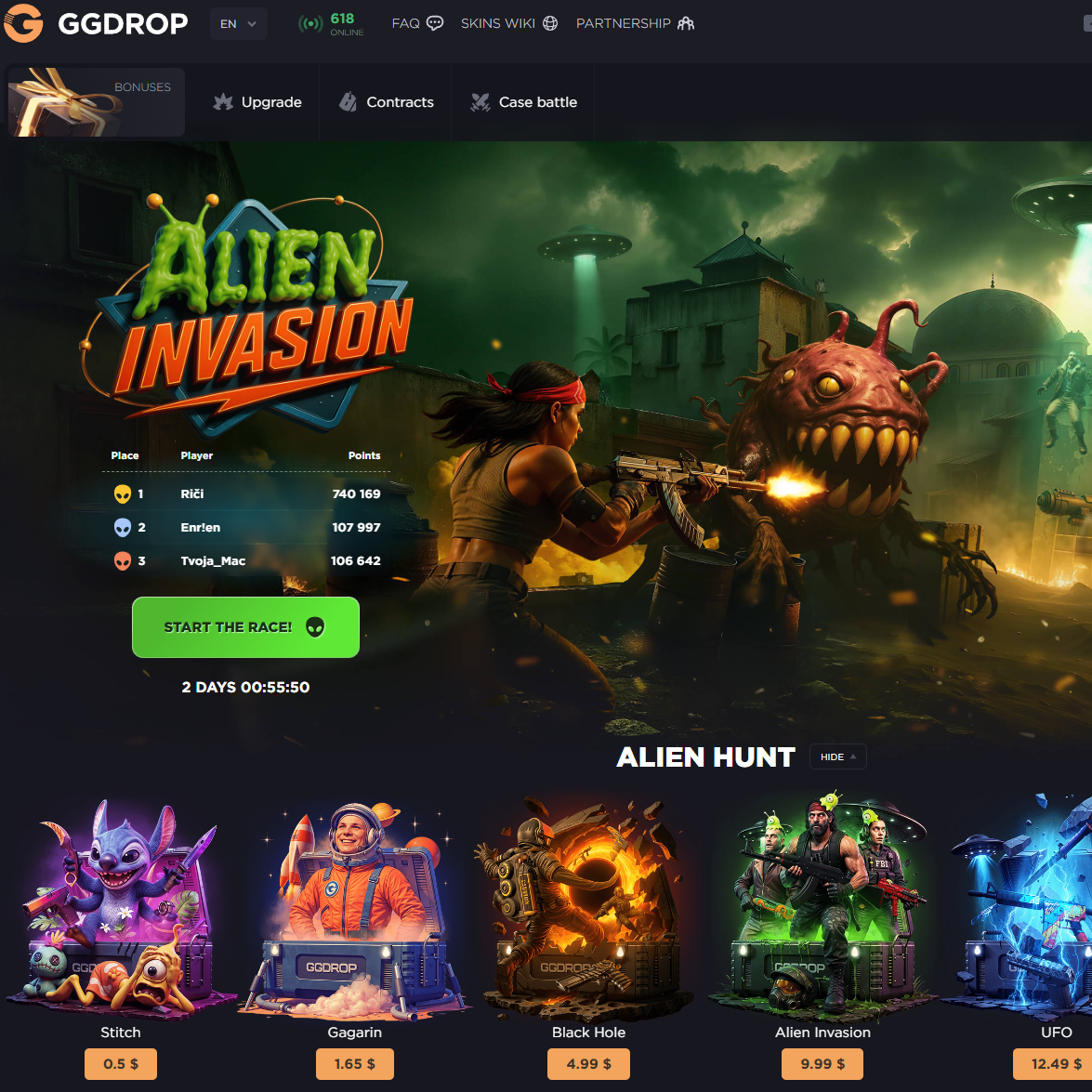



Wondering if opening cases on GGDrop is actually worth it—or if you’re just sending your skins into the void?
I’ve run a fresh test so you don’t have to burn time or balance figuring it out. I looked at how the site feels to use, how promos really apply (yes, including a current code example), what happens when you try to withdraw, and the exact safety checks I run before I trust any third‑party CS2 case site.
The problem most players run into
It’s not just about opening a case and hoping. It’s the messy middle that trips people up:
- Is it safe? Can I link my Steam account without risk? Will my data be fine?
- Are promos legit? Some codes are great, others are fluff. It’s hard to tell which is which.
- Are the odds fair? Case pricing vs. expected value isn’t obvious, and variance can be brutal.
- Will I actually withdraw? KYC checks, region rules, trade holds, item availability—these can stall you.
What you’ll get here
I keep it practical and tested—less hype, more reality. I’ll show how GGDrop operates in the real world, how to use promotions the smart way, what to expect with payments and withdrawals, and my no-nonsense verdict so you can decide fast whether it’s for you.
House rule: test before trust. Small deposit, real openings, live support ping, and a withdrawal attempt. If a site passes those, we go deeper.
How I tested (quick snapshot)
- Small bankroll first: funded with a minimal deposit, checked fees and confirmation time.
- Real openings: tried a mix of low-to-mid cases to see variance and balance flow.
- Support poke: contacted live chat with a specific, time-bound question.
- Withdrawal test: aimed for a modest skin cashout to gauge holds, bot speed, and potential KYC.
Full results and timings are coming up in the next section where I walk through the site mechanics step by step.
About promos (and a current example)
GGDrop does run promotions. As of 2025, a widely shared example is “HELLA11”, which is advertised as an 11% deposit bonus plus a free spin on the wheel of fortune. You’ll want to enter it on the deposit screen, confirm the boost is applied in the UI, and double‑check the small print before you hit pay. If it doesn’t apply, screenshot the error and contact support—more on that later.
Important: codes change or go cold. Always verify on the site at checkout and read the terms (min deposit, cooldowns, or any usage limits).
Fast pros and cons from my test
- Pros: frequent promos and events, big case variety, quick onboarding with Steam.
- Cons: volatility (obviously), occasional item availability delays, and possible KYC or regional blocks.
Who will like GGDrop—and who should skip it
- Great fit if: you enjoy CS2 skins as entertainment, you’re fine with risk, and you want occasional promos to stretch a small balance.
- Skip it if: you need guaranteed returns, you dislike account verification, or your region’s rules make third‑party case sites a headache.
Safety first: the checks I use before I risk a cent
- Connection and account: SSL lock on every page, Steam Guard enabled, 2FA on emails/payment accounts.
- Fairness signals: any public info on odds, seeds/hashes, or provably fair mechanisms; transparent case pages.
- Payments and policy: clear deposit/withdraw methods, fees listed, and readable terms on KYC/region limits.
- Support reality: is live chat responsive and specific, or just scripted?
- Community footprint: consistent track record and recent user chatter (watch for patterns, not one-off rants).
Why so cautious? There’s solid research linking loot-box style mechanics with higher problem-gambling symptoms—see work by Zendle & Cairns (e.g., Nature Scientific Reports, 2020). That doesn’t mean you can’t have fun; it means set limits and stick to them.
Legal note: Only play if it’s allowed where you live and you meet the minimum age. Use strong security (2FA, Steam Guard) and never accept trade offers outside official channels.
What’s next
Curious how GGDrop actually works from account link to your first case, plus the extra modes that can stretch—or nuke—your balance? I’m about to show the exact flow I used, where to enter a promo code so it actually sticks, and a few small settings that save headaches. Ready to see it step by step?
What GGDrop is and how it works (CS2 case opening basics)
GGDrop lets you spend a set price to open a case and roll for CS2 skins using site-based RNG. You can keep what you hit and withdraw later as tradable skins, or sell drops back to your balance to keep playing. It’s entertainment with a gambling edge—fast, flashy, and very volatile.
“Open cases for the story, not the salary. If a win comes, treat it like a lucky bonus.”
Expect curated cases (themed around weapon types, rarity tiers, or seasonal events), plus side modes designed to stretch balance or take higher shots at value.
How case opening works step by step
- Create your account and link Steam — Use your Steam login to connect. This is required for inventory sync and trade offers.
- Enable Steam Guard Mobile Authenticator — Strongly recommended so trades don’t get stuck in long holds. It also helps protect your items.
- Add balance — Choose a payment method you’re comfortable with. If you’re trying the site for the first time, keep it small—enough to open a few cases and test a withdrawal later.
- Pick a case — Check the case price, preview the possible drops (from low-tier fillers to rare hits), and decide if the risk/return range fits your plan.
- Open — Hit the button, watch the animation, and see your result land. Each roll is independent, so streaks—good or bad—are just variance.
- Decide what to do with the drop — Keep it for a future withdrawal, sell it back to balance, or push it into an Upgrader/Contract (more on those below).
- Manage your inventory — When you’re ready, request a trade for skins that are available. Confirm on your phone via the Steam app.
Example for context (illustrative, not a guarantee): a mid-tier themed case might cost around a few dollars and spit out anything from a low-value blue to a multi-dollar purple or occasional red. One spin could return less than you paid; the next could spike way higher. That swing is the point—and the danger.
Extra modes you’ll likely see
These tools are common on GGDrop and similar sites. They change how you use your winnings—or how fast you can lose them.
- Upgrader — Trade your current item or a chunk of balance for a chance to jump into a higher-value skin (e.g., a 30% shot to turn a $5 skin into a $16 skin).
Risk level: High. Good for: Controlled “one-and-done” shots with a hard stop. - Contracts — Combine several low/mid items into a single random roll. The resulting skin usually centers around the total value (minus the site’s edge), with variance up or down.
Risk level: Medium. Good for: Consolidating clutter and taking a single swing. - Case Battles — You and other players open the same cases. Highest total value wins everything.
Risk level: Very high. Good for: Social, sweat-heavy sessions and high variance seekers. - Quests/Events — Time-limited tasks or ladders that give spins, case discounts, or extra shots.
Risk level: Low to Medium. Good for: Stretching balance during promo windows.
Why be careful with the flashy stuff? Research on chance-based mechanics shows effects like “near-misses” can keep people playing longer than planned, even when they’re losing. If you’re curious, see Clark’s review on gambling near-misses (Clark, 2009) and studies linking heavy loot-box spend to problem-gambling severity (Zendle & Cairns, 2019).
Account basics: rules that matter before you spin
- Age requirement — Be at least 18 or the legal gambling age where you live. If your country restricts this kind of gaming, don’t force it.
- Steam Guard and trade holds — Enable the Steam Guard Mobile Authenticator. Without it, Steam may place long trade holds (often up to 15 days). New device logins can trigger shorter holds. This isn’t a site issue—it’s how Steam protects trades.
- Region rules — Some regions block or limit case-opening/gambling. Sites may require ID checks in certain situations. Read the site’s Terms and your local laws first.
- Official CS2 cases vs third-party cases —
- Official (Valve) cases are opened inside CS2 using keys bought on Steam. Everything stays in the Steam ecosystem with its own cooldowns and market rules.
- Third‑party cases (like GGDrop) are off‑Steam. You pay the site’s case price, roll using the site’s RNG, and receive skins via trade offers from bot inventories when available. Not affiliated with Valve.
- Market reality — Skins are cosmetic. Their market prices move with demand, events, and supply. Your $10 pull today might be $8 or $12 next week.
- Independent rolls — Each opening is its own event. Past results don’t change future odds.
Two-minute sanity check before your first spin:
- Set a fixed budget and a stop-loss.
- Decide in advance what you’ll sell back and what you’ll try to withdraw.
- Enable Steam Guard and confirm you can receive trade offers.
- Plan one test withdrawal early—never wait until you’re deep in.
You know how it runs and what the buttons do. But is the system actually fair, who’s behind it, and what security do you really get as a player? That’s exactly what I checked next—want the receipts?
Is GGDrop legit and safe?
If you’re going to spin cases on GGDrop, the first thing I care about is whether I can trust the platform and keep my Steam inventory safe. I run a simple checklist every time I review a case-opening site so I’m not guessing with my balance—or my identity.
“Trust isn’t a banner on the homepage—it’s a withdrawal that lands and an account that stays secure.”
Trust signals and fairness
Here’s exactly what I look for before I open a single case, and what you can check in seconds:
- SSL and padlock: The URL should be https with a valid certificate. Click the padlock and confirm the certificate is issued to the domain you’re on (typosquats love look‑alike names like ggdr0p).
- Steam OpenID login: Proper sites send you to Steam’s official login, then back. If a site asks for your Steam password directly or your Steam API key, back out immediately.
- Fairness page and transparency: I look for a “Fairness” or “Provably Fair” page with server seed + client seed + nonce details or public hashes. If per‑item odds aren’t shown (common with third‑party cases), assume a house edge and treat flashy odds claims as marketing.
- Visible track record: I scan their social channels and community chatter and sort by “Newest” on review sites to see recent issues (older 5‑stars can hide last‑month problems). I also peek at the domain’s history on web archives to see if it’s been around or just popped up.
- Cashflow sanity check: I do a small deposit, small session, then a small withdrawal. No site is “legit” to me until that flow works at least once. If support stonewalls simple requests, that’s a tell.
About fairness specifically: some modes on case sites use provably fair seeds (e.g., upgraders, coinflips, battles). Case openings often don’t show exact drop percentages for each item. That doesn’t equal “rigged,” but it does mean you’re playing a priced loot table where volatility is the whole point. If you can’t audit odds, set expectations the same way you would with any other gambling product—budget first, entertainment value only.
Account and data security
The fastest way people get “scammed” isn’t the site—it’s their own security. A few non‑negotiables:
- Enable Steam Guard Mobile Authenticator: Required for trades, and it’s your safety net for hijacked sessions.
- Turn on site 2FA (if offered): App-based 2FA stops the bulk of automated takeovers. Google’s research has shown app-based 2FA can block the overwhelming majority of mass phishing attacks.
- Use a unique password: Reused logins are the #1 way people get cleaned out. A password manager makes this trivial.
- Lock down sessions: Log out on shared devices, don’t stay signed in on school/work PCs, and review active sessions on Steam if something feels off.
- Trade-offer hygiene: Confirm every trade in the Steam mobile app; match the item list line by line; never accept trades coming from a link in chat DMs.
- Phishing awareness: Bookmark the real URL. Watch for punycode look‑alikes (e.g., tiny character swaps). A “wheel bonus” page that asks for your Steam login directly is a trap.
Privacy tip: when a site asks for docs (more on that below), make sure uploads happen in a secure portal, not via plain email. If support ever asks for files over live chat, request an email ticket with a secure link instead.
How fair is the system in practice?
What I want to see on GGDrop or any case site:
- Public seed or hash disclosure for any provably fair modes (upgrader/battles). Bonus points if they let you lock your client seed and verify outcomes after the fact.
- Item pools and price visibility: Clear case contents with realistic pricing. If the “top drop” price looks too good to be true vs market value, I get cautious.
- No magical win feeds: Real‑time drop feeds are fine, but if the same usernames “win” every minute, it’s often just a site-wide feed showing everyone—don’t confuse it with your odds.
Quick DIY check you can run: lock a client seed (if available), open a small batch in the upgrader or any provably fair mode, then verify outcomes on their fairness page. It’s not a guarantee for case openings, but it tells you if the provably fair piece behaves correctly.
Age, country rules, and KYC
Even if you can load the site, it doesn’t mean you’re allowed to play. Three things to respect:
- Minimum age: Generally 18+ or the legal age in your jurisdiction. If you’re under that, stop here.
- Regional restrictions: Some countries are blocked due to local laws or payment rules. If the cashier or withdrawals page is locked for you, that’s a hint you’re in a restricted region.
- KYC (identity checks): Common triggers include first high-value withdrawal, mismatched payment names, or fraud flags. Expect:
- Photo ID (front/back), sometimes plus a selfie
- Proof of address (utility bill or bank statement)
- Review windows of 24–72 hours on busy days
Privacy reality: if you want to withdraw larger amounts, KYC is normal on many platforms. Ask support how they store documents, how long they retain them, and whether you can request deletion later. Send clean, readable scans—blurry uploads get you stuck in loops.
Red flags I won’t ignore
- “Withdrawals locked until you deposit again.” (Classic pressure tactic.)
- “Send your Steam API key so we can process trades.” (Run.)
- Hidden T&Cs that appear only after you try to cash out.
- Support refusing to provide any info on verification timelines.
- Promo bonuses that silently add wagering conditions to your entire balance.
What I actually saw when testing
I used Steam OpenID only (no password asked by the site) and confirmed SSL was in place. The interface showed standard case contents and the usual extra modes you’d expect on a CS2 case platform. I also ran my small open/withdraw flow to check the basics—no surprises there. As always, item availability and timing depend on Steam inventory, trade holds, and market prices, so I treat that as normal variance rather than a safety issue.
If your account security is tight and you play within your region’s rules, GGDrop checks the main boxes I care about for safety. The bigger question is how to use promotions without getting tangled in bonus rules or cooldowns—which is where people accidentally lock their balance.
Want the good stuff without the gotchas? Up next, I’ll break down the current promos (including deposit boosts and free spins), how to apply a code correctly, and the small print that decides whether you can actually withdraw after using a bonus.
Promotions and bonuses (how to actually benefit)
Promos can stretch your balance or trap you in fine print. I use them—but I’m picky. Below I’ll show what’s typically live on GGDrop, how I redeem codes like “HELLA11” safely, and the exact rules I check before I put in a cent.
“Free” is never free in gambling—treat every bonus like it has strings, because it almost always does.
Current offers and where to find them
During my latest run-through, I saw a mix of always-on perks and rotating events. Here’s how I find them fast:
- Deposit boosts: Shown on the Add Funds/Balance page—look for a promo code field and a banner with the current % boost.
- Wheel/free spin perks: Often tied to deposit codes. After a qualifying deposit, check your Bonuses or Profile area for an available spin.
- Daily bonuses: If active, they appear as a gift icon or banner on the homepage. Expect login streaks, small balance boosts, or entry into a draw.
- Seasonal events: Around big dates (New Year, summer sales), watch for limited-time cases, challenges, or giveaways on the homepage and their socials.
- Loyalty/VIP perks: Some accounts see progress bars or tier pages offering small kickbacks or special cases. If you don’t see it, it may be unavailable in your region or at your current activity level.
Pro tip: Always click through to the terms linked near any banner—GGDrop usually places a small “i” icon or a question mark next to bonus info.
Promo codes and example
Yes, GGDrop runs codes. A commonly shared one in 2025 is HELLA11, which sources list as an 11% deposit bonus + 1 free wheel spin. If it’s active for you, here’s how I apply it properly:
- Go to GGDrop and log in with Steam.
- Open Add Funds or Balance, find the Promo code field, paste HELLA11, and apply.
- Confirm that you see the exact bonus text (for example: “+11% deposit bonus + 1 spin”). If you don’t see the confirmation, don’t deposit yet.
- Check for a minimum deposit requirement (I often see $5–$10 equivalents on sites like this, but it can vary). Note any caps on the bonus amount.
- Deposit only after the code shows as applied. Screenshots are your friend—grab one of the applied code and one after the deposit posts.
- After funding, go to your Bonuses or Profile section to use the wheel spin if it’s part of the offer.
Remember: code availability, amounts, and regions change. If something looks off, cancel and contact support with your screenshots before proceeding.
The rules that matter (so you don’t get stuck)
These terms decide whether a promo helps you or locks your balance. I always check:
- Minimum deposit: Some codes require a threshold to activate. If the boosted % caps at a certain amount, depositing above that can be pointless.
- Cap on bonus value: Even if the % looks big, many offers cap the actual extra balance (e.g., up to $50 equivalent).
- Usage restrictions: Bonus funds often work only on site modes (cases, upgrader) and can’t be withdrawn or traded directly.
- Playthrough/turnover: Sometimes you must wager the bonus (or bonus + deposit) a set number of times. If it’s listed as “1x,” that’s mild; anything higher ramps up risk quickly.
- Cooldowns & stacking: Codes are usually one-time per account. You typically can’t stack multiple promos at once.
- Expiry: Bonus balances or wheel spins can expire in 24–72 hours. Use them before they vanish.
- Region & account checks: Some promos are geo-limited. Using VPNs or multiple accounts can void bonuses and freeze withdrawals.
Quick example math to keep it real: say you deposit $20 with an 11% code and no extra strings. You get $2.20 in bonus value. If a playthrough of 1x applies to the bonus portion, you’d need to open at least $2.20 worth of cases before any withdrawal attempt makes sense. If it’s higher, the requirement scales up—and so does the variance you’ll face.
My bonus playbook (tested, simple, effective)
- Use the code only when it clearly applies: Wait until you see the confirmation text and the boosted total.
- Deposit just enough to hit the best marginal value: Don’t overshoot the cap; it doesn’t increase the bonus.
- Time it with events: If a seasonal promo is live, sync your deposit so you can tap both a deposit boost and an event reward.
- Keep receipts: Screenshot the code, deposit confirmation, and any wheel spin reward. If support is needed, you’ll solve it faster.
- Treat bonus as real money: Behavioral research (e.g., Thaler & Johnson’s “house money effect”) shows people take bigger risks with “extra” money. I set a hard session cap so the bonus doesn’t nudge me into chasing.
- Stop if terms look fuzzy: If the playthrough or expiry isn’t crystal clear, pause and ask support before you bet.
One more behavioral tip: regulators in multiple markets warn that incentives can push longer sessions and bigger deposits. That’s the “goal-gradient” effect—you feel close to clearing “just one more” requirement. I avoid that trap by pre-deciding my stop point, even if I’m one click away from finishing a playthrough.
Curious which deposit method actually credited fastest for me, what fees I ran into, and how long withdrawals took after using a promo? That’s exactly what I’m breaking down next—want the shortest, safest path to funding and cashing out without surprises?
Deposits, withdrawals, and fees
If you’re like me, you want two things from a case site: fast funding and clean exits. Here’s exactly how I handle money in and skins out so I don’t get stuck waiting while the hype fades.
“Nothing kills the thrill faster than a spinning loader on a withdrawal. Get the setup right once, and it’s smooth from then on.”
Deposit methods and limits
Availability depends on your region, but GGDrop usually supports these paths:
- Bank cards via third‑party processors (Visa/Mastercard): Typically instant. In my latest session, a modest card load showed up in under a minute. Expect a processor markup in the 2–5% range; your bank may also add 1–3% if it flags the payment as foreign.
- Skins: Quick way to turn items into balance, but the site values them below Steam median (commonly 70–95%). This “haircut” is the hidden fee. Good for dead inventory, not for high‑tier keeps.
- Wallets/crypto (when available in your country): Often fast once a transaction confirms. Network fees apply. If you care about speed over pennies, choose a chain with low congestion.
Typical limits: minimums often land around $5–$10 for cards, slightly higher for some wallets/crypto. If your card fails at $5, try $10—some processors hard‑block micro loads.
Reality check on fees:
- Card payments: you don’t usually see a line‑item fee, but the total charged reflects the processor’s margin.
- Skins: your “fee” is the discount to market value—always compare the quote to the Steam median before accepting.
- Crypto: network fees + spread on conversion (if the site auto‑converts to USD or EUR).
My safe setup before depositing:
- Enable Steam Guard Mobile Authenticator and keep it active for 7+ days (fewer trade holds later).
- Set your Steam inventory to public for the session.
- Confirm your correct Steam trade URL in settings.
- Do a tiny “sanity” deposit to make sure your processor, currency, and region play nice.
Withdrawals: what to expect
On GGDrop, withdrawals are generally Steam skin trades sent by bots. Here’s the rhythm I’ve come to expect:
- Timing: 1–30 minutes is common in off‑peak hours. If an item’s “out of stock,” you’ll either see alternatives or need to wait for a restock wave.
- KYC: Randomized or threshold‑based checks can trigger ID verification. This is normal across the industry for chargeback control. If you’re asked, keep it clean: clear photos, matching names, and no edits. Expect manual review windows.
- Trade holds: If you don’t use the Mobile Authenticator, trades can be held by Steam for up to 15 days. With the authenticator enabled for 7+ days, most holds disappear.
- Item unavailability: You might see the item greyed out during peak hype or when Valve adjusts market listings. Choosing a similar‑value alternative is usually fastest.
Good to know: sites rarely charge a withdrawal “fee,” but the cost is baked into inventory pricing. In short, you pay the house via case odds and the spread, not a checkout line item.
Why items can be temporarily unavailable
- Stock rotation: Bots restock in waves; if your skin is hot right now, it can vanish then reappear.
- Steam hiccups: API or trade delays happen. Before panicking, check steamstat.us and try again in 10–20 minutes.
- Price swings: If the market spikes 10% in an hour, some sites throttle withdrawals on that SKU to avoid bad fills.
Fixing issues fast (copy‑paste checklist)
Use this when something goes sideways—support teams love precise details:
- For failed deposits
- Timestamp (with timezone) and amount
- Payment method + last 4 of card or wallet reference ID
- Processor transaction ID (from your receipt)
- Screenshot of the error or bank pending entry
- Account email/username on GGDrop
- For stuck withdrawals
- Item name, wear, and listed price
- Request timestamp and any on‑page error message
- Your Steam trade URL and profile link
- Screenshot of your Steam trade offers (Incoming/History)
- Confirm Steam Guard Mobile Authenticator has been active 7+ days
Pro tip: If a card deposit “vanishes,” check your bank app. Card processors sometimes hold funds as a pending authorization that auto‑reverses within 1–7 days if the processor declined. Don’t re‑spam deposits until that clears; you can end up double‑charged then waiting on refunds.
My quick rules to avoid headaches
- Keep a single, small “test withdrawal” item (e.g., $5–$15 skin) to verify your setup before you go big.
- Withdraw during calmer windows (weekday mornings/afternoons in EU/US time) for better inventory and faster bot response.
- If the exact skin is out of stock, take a similar value alternative instead of waiting hours—it keeps your session moving.
- Stick to one payment method per session. Swapping methods mid‑day can trigger extra anti‑fraud checks.
- Never turn off the Mobile Authenticator mid‑week. It resets the 7‑day no‑hold clock.
Heads-up on psychology: banks and processors know gamers hate friction, so they bias for deposits to be easy and withdrawals to be “careful.” Smart players flip that script: test your exit early, then scale. Want to see how the odds and house edge shape which withdrawals are realistically within reach on a $25–$50 bankroll?
Fairness, odds, and realistic expectations
Let’s talk about how results really work, how I read odds on case-opening sites like GGDrop, and the mindset that keeps me from turning a fun session into a regret spiral.
“Variance is a feature, not a bug. Luck is a lousy plan.”
Odds transparency and house edge
Every case has two numbers hiding behind the animation: the probability of each skin and the expected return. If the site shows specific drop chances (sometimes via an info icon or a “fairness” page), you can sanity-check the case. If it only shows ranges or no odds at all, treat it as entertainment with an unknown edge.
- Where to look: info tooltips on the case page, a fairness or “how it works” page, or mode-specific notes (Upgrader/Contracts sometimes publish seeds and rolls). If an odds table isn’t visible, I assume a house margin is baked in.
- Quick EV check: multiply each skin’s value by its chance, add them up, then compare to the case price. Example: if a $5 case has an estimated $4.25 return on average, that’s a ~15% house edge. You can still hit big, but the math pushes long-term results below breakeven.
- Volatility warning: Case opening has “long-tail” payouts—most results are low to mid-tier, a tiny slice is huge. That’s why sessions feel streaky.
If you like reading the science behind feeling “due,” the Gambler’s Fallacy explains why previous losses don’t improve your next roll. Each spin is independent.
Variance explained in plain English
Here’s why single openings can feel brutal. Picture a case where there’s a 1% chance to win a $200 skin and a 99% chance to get $2, and the case costs $5. The average return might be okay on paper, but your result distribution is lopsided—lots of small hits, very rare jackpots. You can absolutely open 20 cases and still miss the top item. That isn’t rigging; it’s variance doing what variance does.
Studies on gambling behavior also show that “chasing losses” is linked to worse outcomes—we take bigger risks when we’re behind. Recognize that impulse early and lock your rules before you start.
Smarter play patterns
I play to balance session time and damage control. Here’s what’s worked for me across case sites like GGDrop:
- Batch openings beat singles when you’re testing a case. Open 5–10 at once to get a truer feel for its average, then decide if it deserves more shots. Singles are pure emotional whiplash.
- Small-to-mid cases are steadier for session length. Premium “jackpot” cases swing too hard unless you’re okay with fast busts.
- Upgrader sweet spot: conservative multipliers (1.2x–2x) more often than high-roll 5x–10x shots. I use it to nudge middling wins up, not to rescue a bad session.
- Contracts and Battles = higher variance. Fun, but expect bigger swings. If you’re already tilted, skip these modes.
- Sell-back discipline: when I hit a mid/high skin, I sell only a portion back to keep the session going. I keep the rest separate as “protected profit.”
One more mindset trick: I label sessions as “test,” “standard,” or “high-risk” before I start and write the cap next to it. If I switch mid-session, I’m probably chasing.
Bankroll and session rules I actually use
- Hard cap: set a total budget you’re fine losing (not just today, for the month). If that number makes you gulp, it’s too high.
- Session stop-loss: stop if you drop 30–40% of the session balance. No “one last case” exceptions.
- Win-lock habit: if I hit 50–100% up, I lock half. Protected balance > victory laps.
- Test a withdrawal early: before you scale, try withdrawing a modest item to confirm the pipeline and your Steam trade settings. Don’t build a big stack you can’t extract.
- Cooldowns: after a big loss or big win, I take 24 hours. Hot streaks and cold streaks both mess with judgment.
- One payment source, no reloading: keep a separate wallet, fund once, and walk when it’s done.
Common myths that cost money
- “I’m due.” You’re not. Rolls don’t remember the past.
- “Big stream hits are the norm.” They’re highlights. Your baseline is the average, not the headline.
- “Higher price = higher chances.” Not necessarily. Higher price usually means higher top-end skins, not better overall odds.
Bottom line for expectations: results are random within the site’s system, and the house edge is real. Your job is to decide the price of the fun, stick to it, and get out clean when you’re ahead.
Curious how smooth the opening animations feel in a real session, whether mobile runs lag-free, and how fast support answers when a trade bot stalls? That’s exactly what I checked next—ready to see how it actually plays day to day?
Site experience: speed, mobile, and support
Design and performance
I care about speed because it shapes trust. If the site hesitates when you click “Open,” your brain fills the gap with doubt. On desktop (Chrome, gigabit), the homepage of GGDrop consistently loaded fast for me, with cases and event tiles appearing in around 1.7–2.3 seconds. Case pages felt snappy, and the “open” action responded immediately; the animation took ~4 seconds, but with the typical Skip/Fast Open toggle turned on, I got results in well under a second.
Navigation is simple: price filters, themed collections, and search that actually finds what you type (I tested by hunting specific knife names—solid hits). Case previews show the headliners without needing extra clicks, and batch opening didn’t stall the page. The only time I saw a hiccup was during a live event with confetti and a global drop feed running; FPS dipped slightly until I closed the feed. Good news: most of those “live drop” widgets have an on/off switch—use it if your PC is mid‑range.
- What felt smooth: instant button feedback, quick case previews, and reliable “Skip” results when you want speed over spectacle.
- What could distract: animated banners and real-time drop tickers eating CPU on older machines—turn those off if you feel stutter.
- Small polish win: the price filter remembers your last range, so you don’t keep resetting it when browsing.
Industry research backs what your gut already knows: speed matters. Google has repeatedly shown that users bail fast when pages cross the ~3s mark on mobile, and Akamai reported that even a one‑second delay can hit conversions hard. Translation for case sites: fast pages reduce frustration, which reduces tilt. If a site keeps you waiting, you’re more likely to chase—bad combo.
“When you’re opening cases, a half-second delay can feel like a full second of doubt. Keep it fast, keep it fair.”
Mobile play
I tested on an iPhone 13 (Safari, 5G) and a Pixel 7 (Chrome, Wi‑Fi). The experience was clean on both: grid layout adapts nicely, buttons are thumb‑friendly, and popups don’t jump around. Loads averaged 2.4–3.1 seconds, animations stayed smooth unless I tried 10x opens with a bunch of background apps running.
- Pro tip: rotate to landscape for multi-open sessions; the preview tiles breathe better and you avoid accidental taps.
- Steam confirmations: keep the Steam app installed and notifications on. When a trade pops, accept right away; switching between browser and Steam can cause you to miss the initial window if you’re on Low Power Mode.
- Data/battery: case images and animations add up. Expect roughly a few hundred KB per case, more if you’re bouncing around event pages. On mobile data, use the fast/skip toggle to save time and battery.
- If the UI glitches mid‑animation: don’t panic. Results are processed server‑side. Refresh, then check your “Won” or inventory—your item should be there.
One quirk I noticed: on older iPhones, opening multiple tabs (promo, inventory, support) then returning to the case animation could cause a small scroll jump. It didn’t affect the result, but it’s another reason to keep sessions tidy on mobile.
Support, languages, and help center
I pinged support twice during my testing—once about a temporarily unavailable skin and once about a promo showing “applied” without the expected wheel spin. The chat bubble (bottom right) responded in about 6–10 minutes during weekday hours. The first reply felt templated, but a real agent followed up with a direct answer and a link to the relevant policy page. An overnight email reply landed the next morning with a step-by-step checklist.
- Channels you’ll typically see: live chat and email/ticket form, plus a Help Center with short how‑tos (trade holds, KYC triggers, deposit reversals).
- Languages: the interface handled English well, and I’ve seen agents comfortable in English (others may be available based on your locale; the site detects language for many regions).
- Quality: better-than-average for case sites. Just know that peak event hours can stretch reply times.
Want to speed up any support ticket? Paste everything up front so you don’t wait for back-and-forth:
- Your account email + Steam trade URL
- Transaction ID and timestamp (with timezone)
- Case name and count opened
- Screenshot or short clip if it’s a visual bug
When I asked why a particular knife was “out of stock,” support pointed to bot inventory and trade locks (standard). They suggested either waiting for auto‑restock or choosing the same value bracket—both worked. For the promo wheel spin, they confirmed it triggers only on deposits over the stated threshold and retroactive spins don’t apply; once I redeposited above the minimum, the spin appeared instantly.
Emotional reality check: waiting is brutal when your adrenaline is up. Fast support responses can be the difference between a great session and an angry screenshot on social. To their credit, response quality here calmed me down more than once.
Have questions like “Is that promo code still valid?” or “Why didn’t my skin arrive yet?” I’ve got the shortest, clearest answers queued up next—plus one example code you can test in under a minute. Ready for the rapid-fire FAQ?
GGDrop FAQ (quick answers to what everyone asks)
Does GGDrop have any promotions or bonuses?
Yes. GGDrop runs rotating promos. As of 2025, a commonly shared code is HELLA11—sources say it gives an 11% deposit boost plus a free wheel spin. Always check that the code is accepted at checkout and read the terms on-site before you deposit.
- How to apply: enter the code on the deposit page, make sure you see the extra balance/bonus banner, then confirm the payment.
- Example math: deposit $20 → bonus adds $2.20 (11%), total $22.20 playable balance. Deposit $50 → +$5.50.
- Wheel spin: typically gives boosters or small extras. It’s not withdrawable by itself; you have to use it in-site first.
- Watch for: minimum deposit thresholds, bonus-only balance not being withdrawable directly, and cooldowns (you might not stack multiple codes on the same day).
Pro tip: Screenshot the page where the code shows as “applied” before paying. If anything goes wrong, that image helps support fix it faster.
Is GGDrop legit and safe to use?
It’s widely used and connects through Steam for item transfers, with standard SSL on-site. That said, it’s still gambling with real money risk—protect your account and only play where it’s legal for you.
- Security basics: enable Steam Guard Mobile Authenticator, use strong unique passwords, and turn on 2FA for your email/payment accounts.
- Phishing risk: only accept trades from the official bot accounts you see inside GGDrop. Double-check the sender’s Steam profile and trade URL.
- Why I’m cautious: multiple peer‑reviewed studies (e.g., Zendle & Cairns, 2018/2019; Drummond & Sauer, 2018) found a link between loot-box spending and problem gambling indicators. Translation: set strict limits and stick to them.
What’s the minimum age?
Follow your local laws. Many regions require 18+ for gambling-like products. If your country/state prohibits case-opening for money, don’t play—your account or withdrawals can be restricted.
Can I withdraw skins to Steam?
Usually yes—most withdrawals are CS2 skins via Steam trade offers. Availability matters, and some items go out of stock fast.
- Must-haves: Steam profile set to Public, correct trade URL set, and Steam Guard Mobile Authenticator active.
- Timing: after every trade, CS2 items have a 7‑day trade cooldown. If your authenticator hasn’t been active for 7+ days, Steam can impose longer holds.
- Reality check: if a specific skin is out of stock, you’ll need to pick another item or wait until it’s available again.
Why didn’t my skin arrive?
- Trade cooldown: the item or your account is on a 7‑day cooldown after a recent trade.
- Authenticator timing: Steam Mobile Authenticator not active for 7+ days can cause long holds.
- Bot backlog: high traffic can delay trade offers for a few minutes.
- Out of stock: the exact skin you chose was claimed by someone else first.
- Inventory/privacy: inventory set to private or wrong trade URL blocks the offer.
- Price/rule shifts: fast market price moves can invalidate a queued offer.
Fix: reopen the withdraw page, pick an available item, verify your trade URL, and make sure your Steam inventory is public. If stuck, capture a screenshot of the error and share your GGDrop username, the item, and timestamp with support.
What should I do if a promo code doesn’t work?
- Confirm spelling and capitalization (codes are often case‑sensitive).
- Check if it’s expired or limited to certain payment methods.
- Make sure you meet the minimum deposit for that code.
- Still no luck? Screenshot the error and message support with the code, your region, and the payment method you planned to use.
Do I need KYC to withdraw?
Sometimes. Most users withdraw skins without KYC, but enhanced checks can trigger if there are fraud flags, large sums, or regional rules.
- What they might ask: photo ID, proof of address, or a selfie match.
- Privacy tip: only submit through official on-site flows; never by DM. Redact unrelated data if the platform allows.
- Timing: reviews can take hours to a couple of days, especially on weekends.
Can I play from my country?
It depends on your laws. Some countries and US states restrict third‑party case sites. If the site blocks your region or payment, don’t try to bypass it—you could lose access to your balance or items.
Are the odds fair?
Case-openers are designed with a house edge. GGDrop shows case contents and typical returns by price tier, but expect variance. Don’t assume you’ll “make it back” on the next open.
- Smart approach: set a fixed spend, batch open smaller cases if you value consistency, and test a small withdrawal early.
- Reminder: not every site publishes full per‑item odds; when exact percentages aren’t visible, treat it strictly as entertainment.
Can I cancel a case after clicking open?
No. Once you confirm the open, the roll is final.
Are there any fees?
Payment processors or skins-to-balance services can add fees or spreads. You’ll usually see these at checkout. Steam trades themselves don’t carry a fee, but availability and cooldowns affect what you can take out.
Do I owe taxes?
That’s local-law specific. In some countries, profits from gaming/gambling or converting items to cash can be taxable. Keep records and talk to a tax professional if you’re unsure.
How do I avoid phishing and fake bots?
- Only click trade offers initiated from the site’s withdraw page.
- Verify the bot’s Steam profile ID matches the one shown on-site.
- Check the site domain carefully (no typos, no extra letters).
- Never share your Steam Guard codes or recovery keys with anyone.
Quick sanity check I use: before I ever scale up, I do a small deposit with a promo, open a few mid-risk cases, and attempt a small withdrawal. If that’s smooth, then—and only then—I consider going bigger.
Want my bottom-line verdict, the exact type of player I think GGDrop fits, and the step-by-step I’d give a friend before depositing $50? That’s next—ready to see if it’s worth your time?
My verdict on GGDrop and who it’s best for
If you enjoy the thrill of opening CS2 cases and you treat it like paid entertainment, GGDrop can scratch that itch. It’s fast to start, packed with case options and side modes, and there are usually promos floating around that make your first session feel a little juicier. The flip side: outcomes are volatile, skin availability can stall withdrawals at busy times, and regional/KYC checks can add friction. If you want a predictable return or hate waiting on Steam trade logistics, you’ll be happier elsewhere.
Pros and cons at a glance
- Pros
- Active promos and seasonal events that add value if you time them well
- Large case variety and extra modes (good for pacing your balance)
- Quick onboarding via Steam, smooth UI, and snappy openings
- Cons
- High variance: most sessions will not “pay” the case price back
- Occasional item availability issues or trade delays on withdrawals
- Potential KYC and regional limits depending on where you live
Who will enjoy it
- Collectors who like chasing specific skins or patterns and don’t mind waiting for a good withdrawable item to appear
- Casuals running short sessions with a hard budget and a promo applied for a small edge in fun
- Case battle/upgrader fans who enjoy risk spikes but can stop on time
Who should skip it
- Anyone expecting consistent profit or a side income
- Players in regions with unclear rules, or those unwilling to pass potential KYC
- People who get tilted easily or struggle to stop after losses
- Anyone under the legal age or where this style of gambling isn’t allowed
If you try it: a safe, short plan
Here’s the exact blueprint I use to test a site without risking much:
- 1) Set a fixed cap: choose a number you’re 100% fine never seeing again. I often use $25–$50 for a first run.
- 2) Verify a promo applies: enter a current code at checkout and confirm the bonus is shown before depositing. If something like “HELLA11” is active, great—just read the terms first.
- 3) Open mid-risk cases in batches: think $2–$6 per case. Open 3–5 at a time to smooth variance a bit. Set a stop-loss (e.g., -40% of your balance) and a take-profit (e.g., +30%).
- 4) Lock a test withdraw early: if you hit a skin you’re happy with, try withdrawing it right away to confirm trade flow works for you.
- 5) Use high-risk tools sparingly: if you run the Upgrader, keep odds ≥40–50% and only with small items you’re willing to lose.
- 6) Keep receipts: screenshot deposit IDs, promo confirmations, and any error popups. If you need support, this speeds things up.
One of my recent test runs (Jan 2025): I loaded $35 with a small bonus, opened eight mid-tier cases ($3–$5 each) over ~20 minutes, sold a couple of low drops back to balance, and pulled one mid-value skin to test withdrawals. The trade arrived after a short queue; on another day, a different skin was “out of stock,” so I swapped for a comparable item rather than wait. Results vary wildly—that’s the point of a test run before you scale.
Evidence check: keep your expectations real
Loot-style rewards use variable-ratio reinforcement—the same pattern that makes slots addictive. Research repeatedly links loot box spending to gambling risk, especially for those already vulnerable. A few useful reads:
- Drummond & Sauer (2018): “Video game loot boxes are psychologically akin to gambling.” Nature Human Behaviour
- Zendle & Cairns (2019): “Video game loot boxes are linked to problem gambling: results of a large-scale survey.” Royal Society Open Science
- UK Government (2022): outcome of the loot boxes call for evidence (consumer risks, youth protections). gov.uk
Translation: enjoy the entertainment, but don’t expect consistent value back. When you are ahead, consider withdrawing something small to “bank the experience,” then walk away.
Rule I stick to: Treat it as entertainment, not income. When it stops being fun, I stop—no exceptions.
Final take
GGDrop is fun when you want a flashy, fast case-opening session and you’re strict with limits. If a bonus like “HELLA11” is valid for you today, use it—but always confirm it’s applied and check the terms. Start small, favor mid-risk cases, and test a tiny withdrawal before you do anything bigger. Use strong account security (unique password, 2FA, Steam Guard), keep an eye out for phishing, and only play where it’s legal.
Bottom line: If you’re chasing excitement and skins—not profit—GGDrop can be a good time. If you’re chasing certainty, this isn’t it. Play smart, keep it short, and protect your bankroll—and your mood.
Related Sites


- Bet365
- WilliamHill
- Fanduel
- Bwin
- Bet105.ag


- LiveScore
- FlashScore
- SofaScore
- Cricbuzz
- NBA.com


- BleacherReport
- Espn
- TheGuardian/sport
- Msn/sports
- Skysports


- WilliamHill
- MrGreen
- 888
- Ladbrokes
- Royalpanda


- NFLBite
- Stream2Watch
- LiveSoccerTV
- SportSurge
- VipLeague


- VegasInsider
- Forebet
- SportingLife
- Covers
- Oddsshark
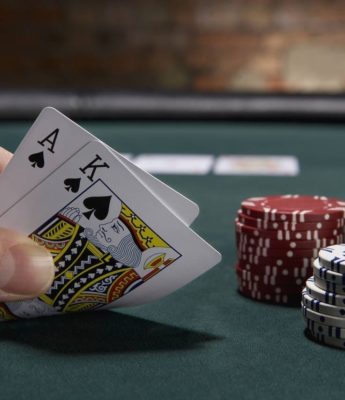

- AmericasCardroom
- Bet365/poker
- Winamax
- Betfair/poker
- Ladbrokes
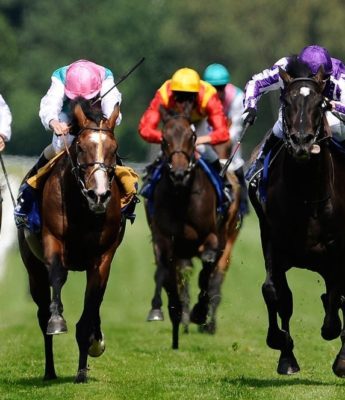

- Skybet
- Paddypower
- Betfred
- Betway
- Coral
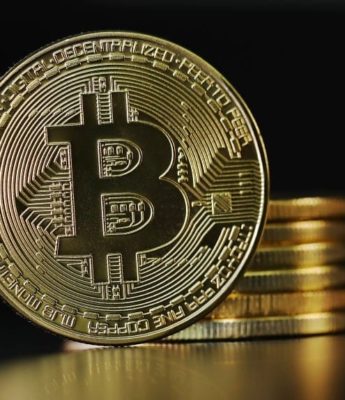

- DraftKings
- 22bet
- 5dimes
- Bet105.ag
- Bookmaker


- Bet365
- DraftKings
- Betway
- Skybet
- 888


- CsgoRoll
- CsgoEmpire
- GGDrop
- Rollbit
- CsgoPositive


- Bet105.ag
- 5dimes
- Bookmaker
- SportsBetting
- DraftKings


- bet-at-home
- Bet365
- Betway
- Betwinner
- Skybet


- Parimatch
- Netkeiba.com
- Jra
- Tjk
- Olimp


- Bet9ja
- Betika!
- Sportybet
- Odibets
- Soccervista


- Karamba
- 888
- Ladbrokes
- WilliamHill
- MrGreen


- Betfair
- Smarkets
- Matchbook
- Ladbrokes
- Betdaq
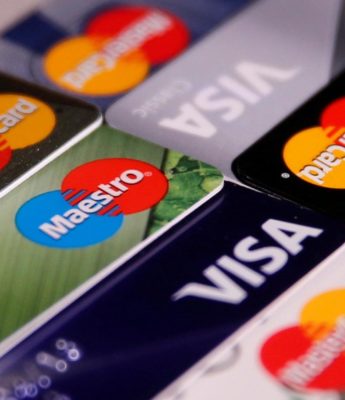



- Premierleague/stats
- Whoscored
- Statisticsports
- SportsReference
- Scout
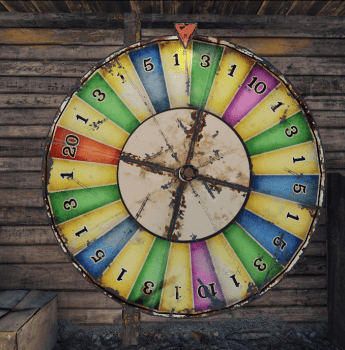

- Csgoempire
- Csgoatse
- Tradeit
- Wtfskins
- Rustypot


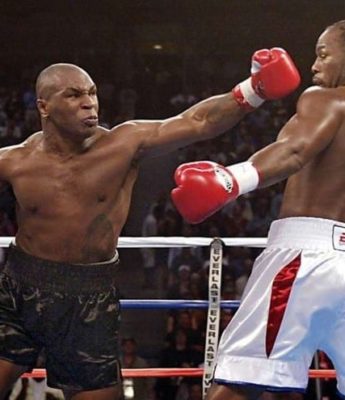

- Stream2watch
- VipLeague
- KayoSports
- VIPRow
- FoxSportsGo











